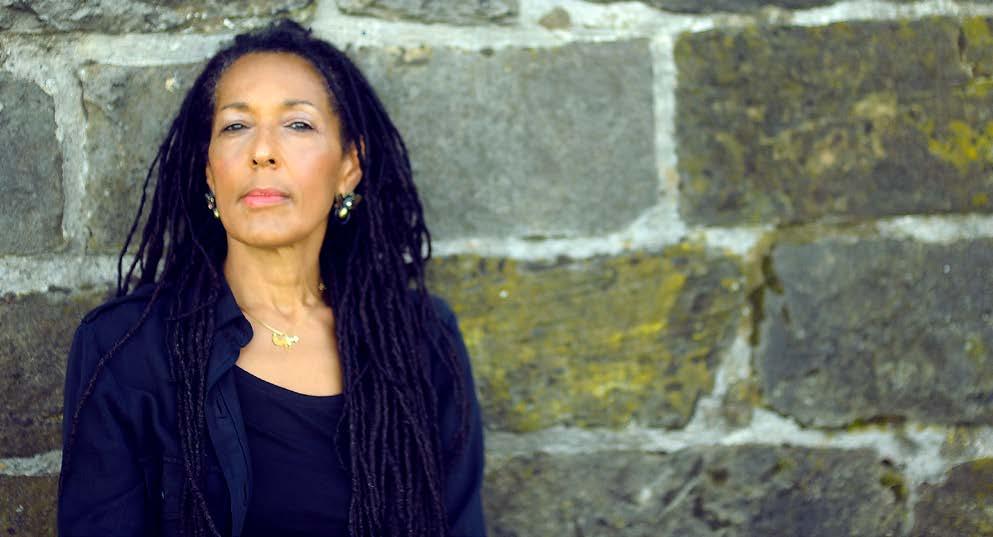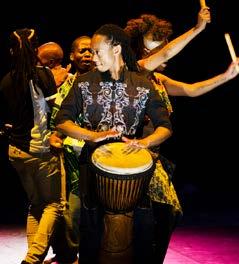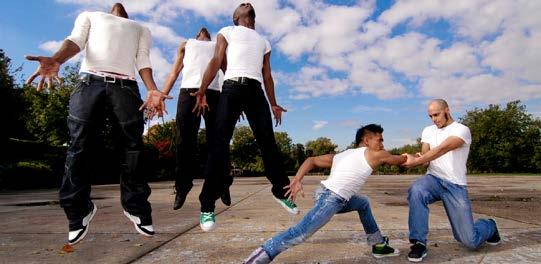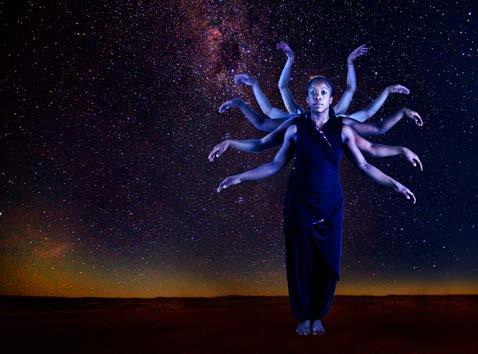
7 minute read
BREAKING DOWN BARRIERS
IN CONVERSATION WITH DEBORAH BADDOO MBE
BY JAZLYN PINCKNEY
Advertisement
Deborah Baddoo MBE, Artistic Director of State of Emergency, co-founded the organisation in 1986 in partnership with Steve Marshall, its Musical Director. State of Emergency is a dance and music production company, producing its own work and establishing a proud history of artist development and advocacy.
Deborah was also an integral part of the HOTFOOT team in its early years, and for decades has been at the forefront of progressing opportunities for artists of colour in this country.
She speaks with One Dance UK’s Jazlyn Pinckney about achievement, visibility for Black dance artists, and some exciting new projects.

Deborah Baddoo © Irven Lewis
As State of Emergency celebrates 35 years in 2021, what are some of the achievements you personally have seen, and those of the sector more broadly?
Generally, there are more opportunities for Black artists, more diverse companies, more representation of Black dancers in conservatoires. There is also more recognition for the achievements of Black artists.
Things have been slow to change. There was a flurry of activity and a lot of virtue signalling as a result of raising awareness after George Floyd’s murder and the Black Lives Matter movement, with some senior appointments made, not necessarily in dance but more in theatre. Theatre is definitely leading the way in diversifying its workforce, particularly at senior level.

Where is Home? (2016) © Kevin Clifford
However, if you look across the senior management teams and boards of many established Arts Council England (ACE) funded organisations, the picture is still more or less the same as it was 35 years ago. This is especially true in non-urban regional areas where I have lived for the last 25 years. Things here seem to be more at a standstill where the makeup of organisations are often 100% white.
Companies such as State of Emergency who have supported the profiling and development of Black dance artists and choreographers over many years are rare. We really invested time and resources into developing this work. We have delivered regional dance platforms, national showcases, conferences, festivals, training and commissioned a range of artists to develop new work.
We also offered choreographic and artistic leaders’ retreats, a national strategic network for Black dance artists and set up the first national archive for Black dance in the UK. We produced and toured full length works nationally and also took our work to an international audience both in Germany, the USA, Japan and South Africa.
Support for the Black dance sector now tends to be up to the individual organisations or arts centres. Those that are committed to developing opportunities for artists, generally, are aware of the disparity in support, and make sure that they have representation from a broad racial spectrum. However, no one organisation covers the breadth that State of Emergency has over its history.

Mission Possible (2008) © Irven Lewis
You are clearly a trailblazer, including through your company and with your integral role with HOTFOOT in its earlier days. What advice do you have to readers who want to make change and be heard and seen?
Basically, keep on knocking on doors, breaking down barriers, it is a long hard road and it is draining, exhausting and extremely frustrating at times.
It is perhaps easier now for people as a lot of the groundwork has already been done by companies such as State of Emergency, Association of Dance of the African Diaspora (ADAD) and a few others, and the glass ceiling has been partially smashed.
Most of the higher profile, respected and remunerated artists have pushed through under their own steam for many years, committed to their craft and working through the rise and fall of different initiatives to support Black artists; or else have been bold, worked incredibly hard and developed the skills and confidence to break down doors.
A new arena in which dancers are finding work is as movement directors for TV, film and advertising. Dancers are now using their skills in a broader variety of ways, making their own paths and careers on a variety of platforms.
With such a broad scope of work through your company and other projects, what is one particular element that you have seen is key to increasing opportunities for artists of colour?
Networking and showcasing are key elements, getting your work seen and making the most of opportunities to network and engage with a broad range of people across the arts and health industries, not just in dance.
Of course, these activities are relevant to all artists, but the struggle for visibility and recognition still exists with artists of colour, especially in ‘the regions’.
Things are slowly changing in our colleges and conservatoires but, again, there is a long way to go. Initiatives for hothousing and developing young Black dancers, such as Artistry Youth Dance, are crucial to raising the confidence and profile of young black dancers.
The academic world is also opening up more to Black dance artists, with a number of significant appointments at universities in the UK. These people are role models for the new wave of artists coming through.

Desert Crossings (2009) © Barry Lewis
The conversation around racial justice for artists and communities of colour has shifted dramatically over the past 18 months, but there is a lot more still to do. How do we keep this momentum going and inspire further positive change?
Again, the theatre world is streets ahead in galvanising and organising themselves into networks and support groups. What is needed in the dance world is an inclusive network for Black dance artists and choreographers and a commitment to work in partnership to make change.
No man is an island and there are lots of small initiatives taking place but these need to join forces, talk to each other and not ‘reinvent the wheel’.
We saw a lot of worthy statements promising commitment to change, but we have yet to see a lot of this rhetoric manifest itself into meaningful action. I see more Black artists aligning themselves with key organisations to build profile and be respected by the gatekeepers, and this is slowly impacting on building bridges to a more integrated dance sector.
However, Black artists often seem to be in a dilemma of wanting to be part of the mainstream, but also wanting to build up a separate identity with ‘Black only’ initiatives. I guess there is sense in building strength as a separate community of interest and support, and then moving this strength and energy into the mainstream.

Co-Mission (2015) © Katherine Brillhart
What can we look forward to in the future for you and for State of Emergency?
In addition to working on freelance projects as producers with a range of clients, we are currently delivering a music and dance project around Windrush and developing work for outdoor performance based on Samuel Taylor Coleridge’s stance as an abolitionist, linking with a number of organisations in Somerset, including the Museum of Somerset.
This is a development of a research and development (R&D) project we undertook during lockdown which resulted in five short solo films with specially commissioned music by State of Emergency’s musical Director Steve Marshall.
The films were a movement response to Coleridge’s abolitionist speech made in Taunton at the Unitarian chapel. The artist choreographers were myself, Bawren Tavaziva, Keisha Grant, Michael Joseph and Kay Crook. You can see these films on our website – our registered charitable sister company, State of Trust, which we set up in 2015 for our socially engaged and educational projects: www.stateoftrust.net
We are also fundraising for Cane Warriors, a project we are developing with acclaimed writer Alex Wheatle. Having seen our previous work, our last production Where Is Home? (www.whereishome.biz) which toured the UK and was performed in the USA, Alex approached State of Emergency to work with him to create a dance theatre production based on his novel, which tells the true story of a slave rebellion in Jamaica in 1760. The project will take place in London and Bristol next year, again with a range of exciting partnerships in place.
Further information:
WWW.STATEOFEMERGENCYLTD.COM










